










Are we equipped to utilize AI for effective myopia management? p14 and other digital advancements
Myopia is, quite simply, complex. Despite relentless research, surprising dimensions of this visual phenomenon continue to emerge. I remember attending the International Myopia Congress in Singapore almost three decades ago, only to leave the conference with more questions than answers.
Since 1960, several studies using familial aggregation, pedigree analysis, twin studies, and population studies have demonstrated heredity as a key determinant in the development of myopia. Furthermore, compelling evidence continues to indicate that early-onset myopia tends to progress more rapidly than late- or adult-onset myopia.
Other research also shows that adult-onset myopia, particularly in university students, may continue to progress to high myopia despite intervention. On the other hand, Mendelian trait early-onset myopias have been observed to progress relatively quickly, even though such a condition is not associated with extensive near work.
The good news, however, is that advancements in technology have improved myopia management techniques. By imaging myopic eyes to detect early pathological changes or predict myopia progression through advanced optical coherence tomography (OCT) features, eye care practitioners can identify myopic maculopathy and myopic traction maculopathy more effectively. This is facilitated by a more precise grading system—making intervention easier.
Posterior staphyloma is more visible with widefield fundus and OCT imaging, while myopic choroidal neovascularization can now
be easily detected through non-invasive OCT angiography using depth-resolved imaging. Indeed, imaging has evidently improved clinical evaluation and management of myopia-associated complications.

Furthermore, recent advancements in artificial intelligence (AI) algorithms aid in the detection and classification of pathologic myopia. AI plays a crucial role in detecting pathologic myopia and its associated complications. Closely monitoring myopia progression has given practitioners invaluable direction and guidance in the best treatment strategy.
What’s more, the academic research community, through the Optometry and Vision Science Journal, has been generous in providing eye care practitioners open and free access to advances in myopia research. It would be highly beneficial to take advantage of these free resources to expand your myopia management toolkit.
Last but not least, the International Myopia Conference will be held on September 25-28, 2024, at Sanya, Hainan, China. Attending this event could prove to be a valuable investment for forward-looking practitioners.
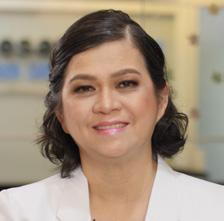
Best,
Dr. Carmen Abesamis-Dichoso OD, MAT, FPCO, FIACLE, FBCLA, FAAOGame-Changers in Myopia Management
Can these innovative and emerging interventions for managing myopia guarantee long-term safety and effectiveness?
Seeing Through the Hype?
While debate persists about the harmful effects of blue light, one study suggests potential drawbacks of blue light-blocking filters

10 12 05 08
Tackling the Myopia Crisis With Contact Lens-Based Drug Delivery
Is the wait over for this novel way of combating axial length elongation to revolutionize myopia management?

The Future of Health Monitoring
In the digital age, eyewear has become a vehicle for advanced healthcare solutions, transcending its traditional role

Myopia Care in the Modern Age
Are we equipped to utilize AI and other digital advancements for effective myopia management?
18
Through Her Lens
A true trailblazer, Dr. Daddi Fadel pushes boundaries and empowers women through her unique perspective and expertise in the specialty contact lens field

The Future of Eyewear
Amid a shift towards personalized experiences, is the eyewear industry ready for 3D printing?
23
From Pitch to Clinic
With sports being a lucrative industry, why not set up your own sports vision clinic?
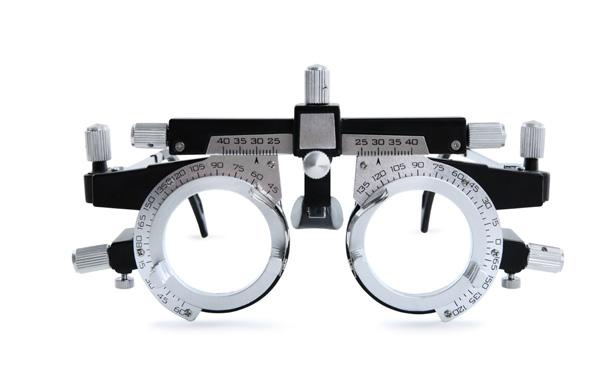

Dr. Carmen Abesamis-Dichoso
Abesamis Eye Care & Contact Lens Center, Manila, Philippines carmen.dichoso@gmail.com

Dr. Kristie Nguyen Dr. Feenstra and Associates; Dr. Kristie Nguyen PLLC, Florida, USA kristie817@gmail.com

Dr. Monica Chaudhry Learn Beyond Vision, New Delhi, India monica.rchaudhry@gmail.com


Dr. Joseph J. Allen Doctor Eye Health, Minnesota, USA hello@doctoreyehealth.com
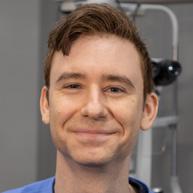
Dr. Mark Eltis View Eye Care, Toronto, Canada drmarkeltis@vieweyecare.com

Dr. Elise Brisco NearSight, California, USA elisebrisco@hollywoodeyes.net
We are looking for eye doctors who can contribute articles to COOKIE magazine. Interested? Let's talk! Send us an email at editor@mediamice.com.
To place an advertisement, advertorial, symposium highlight, video, email blast, or other promotion in COOKIE magazine contact


Matt Young CEO & Publisher
Hannah Nguyen COO & CFO
Gloria D. Gamat Chief Editor
Mapet Poso Editor
Matt Herman Associate Editor
Maricel Salvador Graphic Designer
Writers Andrew Sweeney
April Ingram
Chow Ee-Tan
Hazlin Hassan Tan Sher Lynn
Ruchi Ranga Society Relations & Conference Manager
International Business Development
Brandon Winkeler
Robert Anderson
Sven Mehlitz
Published by
Media MICE Pte. Ltd. 6001 Beach Road, #09-09 Golden Mile Tower, Singapore 199589 Tel: +65 8186 7677
Email: enquiry@mediamice.com www.mediaMICE.com


emerging interventions for managing myopia guarantee
A global concern with the potential to affect billions by 2050, myopia poses risks of severe eye conditions and blindness. Thankfully, innovative interventions show promise in managing myopia. While these interventions offer hope, some still need FDA approval, and others require further research to fully understand their long-term safety and effectiveness in combating myopia.
Myopia is increasingly becoming one of the worst epidemics the world has ever seen, impacting millions of children and adults worldwide. This trend is unsurprising, considering the widespread and prolonged use of digital devices in today’s fast-paced digital world, which has often been linked to myopia progression.
Prolonged near-vision tasks such as reading and writing, and computer and smartphone use are also possible causes of myopia progression.
Many myopia cases involve progressive high myopia, which may not be effectively managed by standard optical corrections like
glasses, orthokeratology, LASIK, intraocular lenses, and corneal refractive surgery.
Progressive high myopia often deteriorates further even with such interventions, raising the risk of developing serious eye conditions, such as retinal detachment, cataracts, or glaucoma—significantly increasing the risk of blindness.
While all this sounds downright depressing, the good news is that researchers are constantly looking for ways to manage myopia more effectively.
Here are three promising interventions for myopia management that have recently emerged.
A revolutionary new therapy called repeated low-level red-light (RLRL) therapy is currently being widely used in China as an effective treatment for amblyopia. The rationale behind the technology is that it mimics or replaces exposure to natural light for children who spend time indoors.
While spending time outdoors is often recommended to prevent or slow the onset of myopia, Dr. Ashley Wallace Tucker, a partner at Bellaire Family Eye Care and The Contact Lens Institute of Houston in Texas, USA, said RLRL is a sensible alternative.
She noted that the current recommendation for outdoor time is at least two hours per day, though more is recommended. “Children who spend less than 13 hours a week outdoors are at significantly higher risk of developing myopia. For many families, spending that much time outdoors is difficult due to a variety of factors: Time constraints, weather, or lack of parental supervision,” shared Dr. Tucker. “RLRL therapy could provide the same benefits of outdoor time in a fraction of the time.”
Potentially, RLRL could serve as an additional method for controlling myopia. “Children with high myopia are particularly concerning due to
the continued risk for unpredictable progression. I doubt this will be used as monotherapy for these patients, but rather in conjunction with other modalities such as spectacles, contact lenses, and atropine.”
At least two randomized controlled trials in myopes and one randomized clinical trial in pre-myopes have already been carried out in China using the device and have indicated high efficacy with RLRL.1,2
The studies show substantial reductions in the risk of myopia onset and rate of myopia progression in children aged from 6 to 15 years.
In the first published, multicenter randomized control trial, Chinese children aged 8 to 13 years with myopia of -1.00 to -5.00 D, astigmatism up to 2.50 D, anisometropia up to 1.50 D and best-corrected visual acuity of 20/20 equivalent were enrolled.
According to Yu Jiang, et. al., in their paper titled Effect of Repeated LowLevel Red-Light Therapy for Myopia Control in Children: A Multicenter Randomized Controlled Trial, the RLRL treatment was provided by a desktop light therapy device that emits red light of 650-nm wavelength and was administered at home under parental supervision for 3 minutes per session, twice daily with a minimum interval of 4 hours, 5 days per week.1
One-year data involving 264 children found differences in axial elongation and SER progression of 0.26 mm and -0.59 D between the RLRL and the control group
No severe adverse effects or structural damage seen on OCT scans were observed.
In the second randomized controlled trial in China, 112 Chinese children aged 7 to 12 years with myopia of at least -0.50 D, astigmatism up to 1.50 D and anisometropia up to 1.5 D, were recruited.
In the study by Jing Dong, et. al., on Myopia Control Effect of Repeated Low-Level Red-Light Therapy in
Chinese Children: A Randomized, Double-Blind, Controlled Clinical Trial, the control group underwent a sham treatment using a device with 10% of the original device’s power.2
The same protocol of 3 minutes per session, twice daily, with an interval between sessions of at least 4 hours, was used.
After six months, the mean SER change was 0.06 +- 0.30 D in the RLRL group while the control group progressed -0.11 D +- 0.33 D. No adverse events were reported.
In a 12-month school-based randomized clinical trial in 10 primary schools in Shanghai, China, a total of 278 children with pre-myopia were enrolled. Children in the intervention group received RLRL therapy twice a day, 5 days a week with each session lasting 3 minutes, at school during semesters and at home during vacations. Children in the control group continued usual activities.3
According to authors Xiangui He, et. al., the 12-month incidence of myopia was 40.8% in the intervention group and 61.3% in the control group. The study showed that RLRL therapy was an effective intervention for myopia prevention, with up to 54.1% reduction in myopia among children with pre-myopia.3
However, Dr. Tucker cautioned that RLRL therapy is not yet FDAapproved in the US, and there have been limited studies on its safety and efficacy.
Currently, several more studies are reportedly underway in Australia, Japan, the USA, the UK and Singapore.
Peripheral defocus lenses are specialized contact lenses or glasses specifically designed for myopia control. This innovative technology has garnered a great deal of excitement, thanks to its potential to slow down the progression of myopia in young patients.
The lenses are made to intentionally induce controlled defocus in the peripheral visual field while maintaining clear central vision. This causes a delayed response in eye elongation, helping to reduce myopia progression.
The Hoya MiYOSMART was the first of the new generation of myopia control spectacle lenses. Data from a two-year randomized controlled clinical trial for Hoya MiYOSMART revealed an average 59% myopia control effect in cycloplegic spherical equivalent refraction and 60% in axial length.
“Since the launch of Hoya’s peripheral defocus lenses, boasting a 59% success rate, we’ve seen other manufacturers follow suit with their own versions of peripheral defocus lenses,” remarked Ms. Christina Tan, an optometrist with Vantage Vision Care PLT in Malaysia.
One such example is Stellest (Essilor; Charenton-le-Pont, France), launched in 2023, which uses Highly Aspherical Lenslet Target (HALT) technology and reports an average success rate of 67%. Both one-year and two-year randomized control trial data have been published.
In a paper by Jinhua Bao, et. al. titled, Spectacle Lenses with Aspherical Lenslets for Myopia Control vs Single-Vision Spectacle Lenses: A Randomized Clinical Trial, children who wear Stellest lenses for at least 12 hours per day, 7 days a week, recorded a final axial length and myopia of respectively 0.41 mm and 0.99 D less than children who wore single vision spectacles.4
However, Ms. Tan cautioned that a limitation of the lens is that it only comes in one type of index.
“This lens technology is manufactured exclusively in 1.59 index, offering safety features but with restrictions. It’s suitable for refractive errors below -10.00 and astigmatism below -4.00. However, patients with high myopia may not be able to use these lenses,” she added.
Ms. Tan noted that she has been
prescribing Hoya’s (Tokyo, Japan) MiYOSMART lenses since their introduction and diligently monitors the axial lengths of her young patients.
“I see that it works. In the majority of children, it effectively slows down myopia progression, and in some cases, there’s been no progress in their myopia for the past two to three years,” she shared.
In a study conducted by Zhong, et. al., researchers investigated the potential of a wireless, battery-free eye modulation patch as a promising clinical treatment for high myopia.5
According to the study, “Wireless ultrasound control of the eye modulation patch, compared to traditional ophthalmic surgery, offers several benefits, including less invasive extracorporeal manipulation therapy.” This approach reduces the need for intraoperative exposure, cuts surgery time, and simplifies the overall treatment.
The technique allows for precise axial length regulation and standard corneal cross-linking performance via ultrasound, boosting treatment accuracy and reducing the need for repeat surgeries.
The study achieved an average axial length adjustment of approximately 1.217 mm in rabbit eyes, potentially translating to a significant myopia correction in humans (~2.5 diopters).
Despite correcting refractive errors, myopia can recur due to scleral thinning and extension. “Our innovative approach combines riboflavin microneedles/blue μ-LED treatment for scleral cross-linking, resulting in a notable increase in scleral strength by about 387%,” the study said.
The patch consists of piezoelectric transducers, an electrochemical microactuator, a drug microneedle array, μ-LEDs, a flexible circuit, and biocompatible encapsulation.
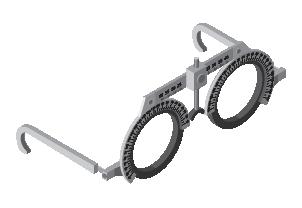
fully understood. Therefore, further research and extended observation are necessary to better assess the treatment’s long-term safety and effectiveness.

The system can be wirelessly powered and controlled using external ultrasound. The electrochemical micro-actuator plays a key role in shortening the axial length by driving the posterior sclera inward, enabling accurate scene imaging on the retina for myopia.
The drug microneedle array delivers riboflavin to the posterior sclera, and μ-LEDs’ blue light induces collagen cross-linking, reinforcing sclera strength.
In vivo experiments demonstrate that the patch successfully reduces the rabbit eye’s axial length by ~1217 μm and increases sclera strength by 387%. The system operates effectively within the body without the need for batteries.
However, due to the study’s small sample size and the relatively short 22-day post-surgery observation period, longterm outcomes and potential complications are yet to be
Dr. Ashley Tucker graduated from the University of Houston College of Optometry (UHCO) where she also completed a Cornea and Contact Lens Residency. Dr. Tucker spends the majority of her clinic time managing patients who are in need of specialty contact lenses or myopia management. She is a partner at Bellaire Family Eye Care and The Contact Lens Institute of Houston. She is also an adjunct faculty at the University of Houston College of Optometry, where she is the course master for the Ophthalmic Optics Laboratory. She currently serves as the Public Education Chair for the Scleral Lens Education Society, is on the advisory board for the Gas Permeable Lens Institute (GPLI), is a council member for the Contact Lens and Cornea section of the AOA, and is a regular columnist for Contact Lens Spectrum, Optometry Times, and Review of Myopia Management.
ashley.w.tucker@gmail.com

References
1.Jiang Y, Zhu Z, Tan X, et al. Effect of Repeated Low-Level Red-Light Therapy for Myopia Control in Children: A Multicenter Randomized Controlled Trial. Ophthalmology. 2022;129(5):509-519.
2. Dong J, Zhu Z, Xu H, He M. Myopia Control Effect of Repeated Low-Level Red-Light Therapy in Chinese Children: A Randomized, Double-Blind, Controlled Clinical Trial. Ophthalmology. 2023;130(2):198-204.
3. He X, Wang J, Zhu Z, et al. Effect of Repeated Low-level Red Light on Myopia Prevention Among Children in China With Premyopia: A Randomized Clinical Trial. JAMA Netw Open. 2023;6(4):e239612. Erratum in: JAMA Netw Open. 2023;6(9):e2337652.
4. Bao J, Huang Y, Li X, et al. Spectacle Lenses With Aspherical Lenslets for Myopia Control vs Single-Vision Spectacle Lenses: A Randomized Clinical Trial. JAMA Ophthalmol. 2022;140(5):472478.
5. Zhong T, Yi H, Guo J, et al. A wireless battery-free eye modulation patch for high myopia therapy. Nat Commun. 2024;15(1):176
Ms. Christina Tan is an optometrist with Vantage Vision Care PLT, Malaysia. After graduating with honors in Optometry from International University College of Technology TwinTech (IUCTT), Malaysia, she joined the International Specialist Eye Centre (ISEC), Malaysia, and worked closely with ophthalmologists from diverse subspecialties. She started her own private practice in 2015, fitting specialty contact lenses for irregular corneas and managing myopia control for children. She is also a visiting optometrist at OasisEyes specialist and the University Malaya Medical Centre.
christina.tansl@gmail.com
As the prevalence of digital devices increases, so does the concern about the potential long-term effects of exposure to blue light emitted by screens. With 80% of American adults using digital devices for more than two hours daily, the use of blue light-absorbing filters in glasses has become popular. However, a pilot study from the University of Granada suggests a potential downside, indicating a slight worsening of blue/yellow color discrimination with these filters.
In today’s fast-paced, technology-driven society, many of us use electronic devices for hours every day, ranging from smartphones to tablets and laptops. There is growing concern about the long-term effects of screen exposure from digital devices, as they emit blue light, which could be potentially harmful to the eyes.
According to statistics from the USA-based Vision Council, 80% of American adults use digital devices for more than two hours a day. Additionally, nearly 67% use two or more devices at the same time, with
59% percent experiencing symptoms of digital eye strain.
There are concerns that continuous exposure to blue light over time could damage retinal cells, potentially causing age-related macular degeneration, cataracts, eye cancer, and growths.
Additionally, exposure to blue light before bedtime may disrupt sleep patterns, which could play a role in the development of type 2 diabetes, cardiovascular disease, cancer, and sleep disorders.
Due to concerns that blue light is harmful, the use of blue light-blocking filters has gained popularity among eyeglass wearers. However, there is still ongoing debate over whether blue light really poses actual risks.
In 2018, a comprehensive report1 from two European Commission scientific committees focused on the assessment of potential health risks associated with LEDs concluded that “there is no evidence of direct adverse health effects from LEDs emission in normal use (lamps and displays) by the general healthy population.”
They also recommended further research to ascertain the specific impact of LED lights on the circadian system, as “it is not clear if this evening disturbance of the circadian system leads to long-term adverse health effects.”

Blue light-absorbing filters are currently marketed as an additional feature in ophthalmic lenses, contact lenses, intraocular lenses, as well as screen protectors for devices. In some gadgets, users can adjust the intensity and color temperature of the display by dimming the blue LEDs.
Many ophthalmic lens manufacturers currently offer blue light filters. However, some wearers prefer not to use them due to their impact on chromatic discrimination and color perception.
Those particularly affected are professionals who work closely with color in their respective fields, such as graphic designers, photographers, lighting technicians, painters, and tattooists.

A pilot study2 carried out by researchers from the University of Granada, Spain, evaluated the impact of long-term use of eight different blue light-blocking filters on color perception. The study spanned more than two weeks and involved a group of 18 normal color vision observers, comparing them with a control group of 10 observers.
The results of the study published in 2022 indicated a trend toward worsening color perception with the filters on. In summary, the study showed a slight deterioration in blue/ yellow color discrimination with the filters in use.
Co-author Dr. Eva M. Valero highlighted that the study’s findings could raise awareness among optometrists and users. “Using the blue light-blocking filters can have certain consequences in the patient's color vision, and it could potentially be disturbing for patients that need a fine-tuned color sensitivity for their jobs,” she explained.
She added that, currently, there are no studies on human subjects that prove that blue light is actually harmful.
“The implications for patient visual care go beyond the findings of the study. We intend to encourage optometrists to question the use of these blue light-blocking filters for everyone. These filters might have undesirable effects in some cases, and professionals in visual health should be aware of this issue. I would not say that they enhance the visual experience for adults in any way,” Dr. Valero added.
“It is our opinion, as a group of researchers in color vision, that these filters have more disadvantages than benefits. The alleged harmful effects of the blue portion of visible light have been questioned in many scientific studies. And, indeed, there is a current of thought that suggests blue light is not harmful at the levels we are exposed to daily from either natural or artificial sources,” she continued.
“Even if these filters are called ‘blue-blocking,’ we have measured their transmittance functions and found that, at the minimum transmittance, they still let more than half of the incident radiation pass through. So they are not totally blocking the blue portion of the spectrum,” she further explained.

On the other hand, Mr. Ryan Ho, an optometrist at Malaya Optical in Malaysia, shared that blue light can potentially disrupt sleep cycles and cause digital eye strain.
“While it is not definitively proven that blue light from screens causes harm to our eyes, the sheer amount of time we spend in front of screens in our daily lives calls for a cautious approach,” he said. “Advocating for the use of blue-light blocking lenses seems like a sensible supplementary measure,” he remarked.
It complements other established practices, such as managing screen time and adhering to the ’20-20-20 rule,’ which recommends taking a 20-second break to look at an object 20 feet away every 20 minutes.
“This dual approach—using blue light-blocking lenses in conjunction with mindful digital habits—fits well with our modern lifestyle. It's about striking a balance that offers extra comfort and protection in a world where screen usage is increasingly prevalent,” advised Mr. Ho.
Mr. Ryan Ho first undertook a Bachelor of Science in Microbiological Sciences at the University of Kansas, USA, in 1996 before studying Optometry at the International University College of Technology Twintech, Malaysia, in 2008. He is a skilled optometrist with over 15 years of experience. He obtained his first degree in B.Sc. at the University of Kansas, USA, and continued to pursue his passion for his Bachelor of Optometry (Hons) in Malaysia. His opinions on the treatment of Ortho-k, monovision, progressive lens fitting, and myopia in children have been well sought after on national television stations, such as RTM, TV3, and national newswires, as well as publications such as Bernama, The Star, and more. He has helped build Malaya Optical from a family-owned business of three generations to become a two-time award winner of the prestigious Brand Laureate Award. While he is busy running his retail practices, online store, and building an eyewear brand, Mr. Ho makes sure to spend quality time with his family as they are the inspiration behind this brand. During his leisure time, Mr. Ho enjoys riding his road bike on numerous road adventures.
ryan@malayaoptical.com

1. European Commission. Scientific Committee on Health, Environmental and Emerging Risks SCHEER. Opinion on Potential risks to human health of Light Emitting Diodes (LEDs). Available at https://health.ec.europa.eu/ system/files/2019-02/scheer_o_011_0.pdf. Accessed on December 22, 2023.
2. Santandreu M, Valero EM, Gómez-Robledo L, et al. Long-term effects of blue-blocking spectacle lenses on color perception. Opt Express. 2022;30(11):19757-19770.
Dr. Eva M. Valero obtained a Bachelor’s Degree in Physics in 1995 and a Ph.D. in 2000, both at the University of Granada. She worked as an assistant professor at the Department of Optics from 2001 to 2007 and later as an associate professor from 2007 onwards. Dr. Valero is an active member of the Color Imaging Lab at the University of Granada. Initially focusing on spatial color vision, her research interests have expanded to include multispectral imaging and color image processing, with a specific focus on Color Vision Deficiency Aids.
valerob@ugr.es
Is the wait over for this novel way of combating axial length elongation to revolutionize myopia management?
The myopia pandemic is one of the greatest challenges faced by optometry today. Despite having several options at our disposal to treat the disease, the number of cases continues to rise exponentially. Could contact lens-based drug delivery systems for myopia management be the answer?

The clock is ticking in optometry clinics across the world. The growing prevalence of myopia poses a significant challenge for the ocular healthcare community, particularly in East Asia, where it could easily be described as endemic. This has a stark effect on children born in the 'screen age,’ who spend more time in front of a tablet than playing outside.
Fortunately, there are treatments available, particularly in developed countries.
Innovations in myopia management
In the United States, soft multifocal contact lenses, orthokeratology contact lenses and low-concentration atropine have all been shown to effectively slow myopia progression and eye growth.
“Many other countries, including Canada, also have access to spectacles that can slow myopia progression and eye growth, but they still need to go through the FDA
approval process before they will be on the market in the United States,” said Dr. Jeffrey Walline, acting dean and associate dean for research at The Ohio State University College of Optometry (Columbus, Ohio).
A specialist in both myopia treatment and pediatric contact lens studies, Dr. Walline argues that the one silver lining of myopia’s progression is that research is increasing at the same pace. One of the most promising potential treatments is contact lens-based drug delivery systems designed specifically for myopia management.
“As myopia affects such a significant proportion of the world, and because it is related to sight-threatening complications, much more scientific evidence is being generated. The scope of myopia management is rapidly evolving, so doctors need to be aware of the latest advances in evidence-based myopia management,” Dr. Walline said.
“A contact lens-based drug delivery system would offer patients
two concurrent treatments, as combination treatment has been shown to be more effective than monotherapy. However, to date, most of the contact lens-based drug delivery methods have not extended delivery time sufficiently to provide better treatment outcomes,” he added.
The advantage of using a contact lens-based drug delivery system is that the drugs they release have a prolonged contact time with the cornea, leading to improved bioavailability.
Over 50% of the drugs released from a contact lens delivery system can diffuse into the cornea, which is at least 35 times more efficient than eye drops. This increase in efficiency permits substantially reduced concentrations to be used, decreasing the potential for side effects as less drug is absorbed systemically.1
However, according to Dr. Walline, there’s a problem: We currently don’t have any contact lens-based drug delivery systems for myopia management.
Similar solutions have recently emerged to treat other conditions, but there’s still nothing for myopia, despite a large body of research on the matter that highlights its potential efficacy.
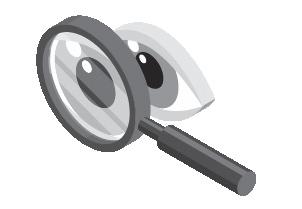
The problem lies primarily with suboptimal kinetics, as drug release has been primarily diffusion-controlled, and first-order kinetics are typically observed—meaning that the rate of drug release is not consistent over time. This results in most of the drug being released in the initial stages.1
“The issue of kinetics means that contact lens-based drug delivery systems for myopia management would not be able to work at maximum efficiency. They would deliver the drugs required by the patient, but the results would be erratic due to the skewed treatment schedule. This should be a priority area for researchers working on myopia,” said Dr. Monica Chaudhry, director of the Monica Chaudhry Vision Institute (MCVI) in Gurugram, India.
Dr. Chaudhry has made myopia one of her top priorities. While rates are lower in India than the global average, they are also on the rise. She believes that a contact lens-based drug delivery system would be ideal for treating myopia, especially in cases where contact lenses are used for myopia control. However, at present, that belief remains theoretical due to limitations faced by researchers.
“A major limitation in this field is the scarcity of in vivo studies validating the effectiveness of a contact lens delivery platform,” explained Dr. Chaudhry.
“There have only been two published animal studies using contact lens drug delivery systems to treat ocular conditions—both indicated enhanced bioavailability and reduced systemic drug uptake compared to conventional eye drop treatment. Further research is urgently needed,” Dr. Chaudhry added.
The challenge is clear: Significant research is required before optometry is ready to begin using contact lens-based drug delivery systems for myopia management.
“These challenges should inspire
researchers and doctors to examine ways to utilize contact lens-based drug delivery systems for myopia management. With increased and more detailed research, we could begin to deploy contact lens drug delivery systems for myopia treatment,” shared Dr. Chaudhry.


The urgency is acute; myopia will not stop growing exponentially. Studies consistently report exceptionally high rates of myopia among schoolchildren in East Asia, with a prevalence of 73%, while North America also experiences high rates at 42%. Risk factors for the disease, especially among children, include low outdoor time and near work, dim light exposure, the use of LED lamps for homework, inadequate sleep, maintaining a reading distance of less than 25 cm, and residing in urban environments. Yet myopia prevalence continues to increase around the world.2
It is estimated that 1.4 billion people were myopic in 2000, and it is predicted that by 2050, that number will reach 4.8 billion. Myopia is known to be associated with several ocular complications, such as retinal detachment, glaucoma, cataracts, optic disk changes, and maculopathy—making it an emerging crisis of great proportions.2
Dr. Jeffrey Walline , OD, PhD, is a professor and associate dean of research at the Ohio State University College of Optometry. He received his Ph.D. in vision science at the same institute and studied for his bachelor's in optometry at the University of California, Berkeley. Dr. Walline specializes in treating several conditions, including myopia, keratoconus, and corneal trauma, and is highly regarded for his expert knowledge of contact lenses and their associated risk factors.
walline.1@osu.edu

Perhaps someone reading this article will take up the rallying call. If that happens, optometry may soon benefit from contact lens-based drug delivery systems in the near future. While there may be initial challenges, further research should resolve them.
Will you be the one to make the breakthrough?
1. Phan CM, Hui A, Subbaraman L, Jones L. Insights to Using Contact Lenses for Drug Delivery. Clin Exp Pharmacol 2014;3:145.
2. Grzybowski A, Kanclerz P, Tsubota K, et al. A Review on the Epidemiology of Myopia in School Children Worldwide. BMC Ophthalmol. 2020;20(1):27.
Dr. Monica Chaudhry , BSc, MSc Optometry, PhD Scholar, is the director of the Monica Chaudhry Vision Institute (MCVI) and the founder of Learn Beyond Vision, an online optometry up-skilling education platform. Dr. Chaudhry is a retired optometrist, having served at the All India Institute of Medical Sciences (AIIMS) in New Delhi. She had academic experience with various universities, including the Indira Gandhi National Open University (IGNOU) and Amity University (India), and has recently retired as director of School of Health Sciences at Ansal University (Gurgaon, India). In recognition of her contribution to the field of academic medical service, she has been awarded the Shreshtshree Award by the Delhi Citizen Forum, the Australian Leadership Fellowship award in 2012 and the IACLE Contact Lens Educator of the Year (Asia Pacific) award in 2015. Dr. Chaudhry was chairman of the Optometry Council of India. She has been actively involved in organizing conferences, seminars, national and international workshops, faculty development programs and many corporate training programs.
monica.rchaudhry@gmail.com

In the digital age, eyewear has become a vehicle for advanced healthcare solutions, transcending its traditional roleby Tan Sher Lynn
From real-time health monitoring to targeted drug delivery, smart eyewear holds great potential for improving patient outcomes and bridging healthcare gaps. However, challenges such as cost, accessibility, and security must be addressed to unlock the full benefits of these transformative technologies.
In the rapidly evolving digital age, eyewear has expanded beyond its traditional roles to become a gateway to advanced healthcare solutions. It is poised to revolutionize healthcare monitoring and patient care. To explore deeper into this transformative wave, we interviewed esteemed US optometrist Dr. Kevin Chan to gain insights.
Beyond vision correction
Imagine wearing glasses or lenses that not only correct vision but also act as mobile biosensors, capable of monitoring vital health metrics in real time.
“Smart eyewear equipped with artificial intelligence (AI)-driven technology allows for sophisticated health monitoring, more streamlined patient care, and an enhanced doctor-patient relationship for quality healthcare,” said Dr. Chan.
“In essence, wearing a pair of smart glasses or contact lenses is like having a pair of mobile, wearable biosensors for living. Imagine when doctors can utilize AI-driven smart lenses to scan through electronic patient records and images to help deliver a sophisticated quality of health monitoring for patients remotely.”
Smart lenses have also demonstrated a myriad of medical breakthroughs. “These include sensor-controlled technology to standardize the quantity and quality of medication released via drug-delivered contact lenses, as well as intraocular pressure (IOP) for glaucoma screening. Furthermore, they also enable doctors or technicians to estimate patients' prescription simply by a quick glance,” he remarked.
Meanwhile, smart glasses equipped with blue light-filtering and sensors can not only reduce eye strain and improve sleep quality but also track essential metrics related to eye health.
“The blue light in short wavelength emitted by our phones and digital screens can potentially transmit high levels of energy to human eyes. This can lead to eye strain and disrupt the circadian rhythm, affecting sleep cycles. Smart glasses incorporate built-in blue light filters along with advanced functionalities, such as tracking blinking frequency, screen time, and font size detection, among others. These metrics can empower consumers or patients to make wise and informed decisions on alleviating eye strain. They can also share this information with their eye care providers to facilitate clinical recommendations,” explained Dr. Chan.
Dr. Chan remarked that with the adoption of smart glasses and contact lenses, eye care providers are no longer just ‘providers’ for patients.
”While it’s not to suggest that smart glasses or contact lenses would ultimately replace the in-person patient experience with doctors, their integration into healthcare can bridge geographical and knowledge gaps, particularly for patients in rural areas or those facing mobility challenges,” said Dr. Chan.
He also noted that patients using smart glasses or contact lenses can simply monitor or track their own eye health status via simple clicks or blinks, all from the comforts of their homes.
“It would save them time and expenses for lengthy commutes for each medical visit without sacrificing quality healthcare. The gathered information can be transmitted to their doctors' computers or phones to help gauge clinical plans or decisions. It would be a win-win scenario,” he elaborated.
"While the concept of using smart contact lenses to deliver medication has been around for years, it is fascinating to see the recent cuttingedge advancements. These lenses now incorporate electrochemical sensors and automation for health monitoring purposes, particularly in conditions like diabetic retinopathy, glaucoma, dry eye disease, and more," explained Dr. Chan.
He highlighted a specific type of smart contact lenses designed to target a glucose-metabolizing enzyme, known as glucose oxidase. These lenses use a biocompatible polymer with ultra-thin electrical circuits and microchips to help monitor and control blood sugar spikes. This facilitates on-demand controlled drug release and delivery, such as insulin for diabetes or latanoprost for lowering intraocular pressure (IOP).
He added that nanotechnology has also been incorporated to ensure continuity and long-term stability of drug delivery. For instance, hyaluronic acid has been reported to be added to gold and platinum particles within the microchips, enhancing the level of transmissibility and distribution of medication.
Dr. Chan also highlighted the RPS InflammaDry Detector (RPS Diagnostics, Inc., Florida, USA) as an excellent immunoassay tool for detecting matrix metalloproteinase-9 (MMP-9) levels in tears, which helps in determining the presence of dry eye disease. In essence, MMP-9 is a non-specific biomarker indicating the presence of cellular inflammation and wound healing.1
Interestingly, MMP-9 has also been
implicated in the development and progression of glaucoma, with MMP9 levels found to be overexpressed in the tears of patients with earlystage glaucoma.2 The relationships between MMP-9 and IOP are intricately intertwined, as elevated IOP can up-regulate the MMP-9 levels, This makes MMP-9 a potential surrogate biomarker for diagnosing and monitoring progressive glaucoma.
“That said, it currently stands solely as an external tool. Further research is warranted to revolutionize the way smart contact lenses can be used to gauge the accurate level of MMP-9 in vivo 24/7, so that it can provide patients and clinicians with the most robust health data analysis,” noted Dr. Chan.
Nevertheless, there are challenges that need to be addressed. “Potential challenges that come with these advanced or so-called 'futuristic' technologies include, but not limited to, costs, accessibility, and security. Due to their scarcity, the startup costs for providers and patients can be steep, which may deter patients from continuing medical care. As a result, patients may not be able to fully access the care they expect, similar to what they experience during in-person doctor visits," explained Dr. Chan.

potential breaches or leaks of personal information," he suggested.
Dr. Chan foresaw that the development of health-monitoring eyewear and contact lenses would transcend toward the revolutionary road of medical breakthroughs, despite being in its infancy.
“The diagnostic and therapeutic capabilities of smart eyewear are limitless, particularly for helping clinicians make early and preventative clinical decisions. It also benefits non-compliant patients by ensuring medication adherence and enabling continuous health monitoring, especially when in-person care is limited due to geography or doctor shortages,” Dr. Chan concluded.
1. Jeng BH. Ocular Surface Disease: Cornea, Conjunctiva and Tear Film. In: Holland EJ, Mannis MJ, Lee WB, eds. Elsevier; 2013. London, UK.
2. Sahay P, Rao A, Padhy D, Sarangi S, Das G, Reddy MM, Modak R. Functional Activity of Matrix Metalloproteinases 2 and 9 in Tears of Patients With Glaucoma. Invest Ophthalmol Vis Sci. 2017;58(6):BIO106-BIO113.

More importantly, he emphasized, that with all the health information being transmitted and utilized remotely, sophisticated measures are warranted to safeguard patients' confidentiality and security.
"These technologies, given their breadth and versatility, are particularly vulnerable to cybersecurity crises by hackers. While it is virtually impossible to guarantee foolproof security systems in a cyber world, what we can do is openly communicate with healthcare providers about how we want our health information used and shared. Implementing a multiple-tiered authentication system, rather than automatic login, can help minimize
Dr. Kevin Chan holds dual OD and MS degrees (Vision Science) from the New England College of Optometry. As senior clinical director at Treehouse Eyes, he also consults for Johnson & Johnson Vision and Essilor’s Myopia Taskforce. Dr. Chan received the Global Specialty Lens Symposium (GSLS) 2024 Rising Star Award in recognition of his contribution to the field of cornea and contact lenses, and was a 2023 Healio honoree. A renowned lecturer on contact lenses and myopia management, he presented the TEDx talk 'Myopia - Global Epidemic' and participated in the Ophthalmology Innovation Summit (OIS) - Myopia Showcase in 2021. His works have been published in Optometry & Vision Science and other notable journals.
kevin.chan@treehouseeyes.com

Driven largely by factors such as decreased outdoor time and increased near-work activities, the prevalence of myopia is predicted to affect half of the world’s population by 2050. Various interventions and the potential role of digital technologies and artificial intelligence in myopia management are significant topics of discussion in this field. However, despite promising advancements, challenges persist in effectively integrating these technologies into clinical practice.
Currently, childhood myopia management comprises various interventions, including environmental interventions such as increasing time outdoors, optical interventions like peripheral myopic defocus spectacles and orthokeratology, and pharmaceutical interventions such as atropine eye drops. Monitoring and providing ongoing care for this growing number of patient populations is
a tremendous task for eye health professionals.
While leveraging innovative digital technologies and harnessing the power of artificial intelligence (AI) may offer some solutions for myopia detection and management, the question remains: Are we there yet?
Dr. Monica Chaudhry, Director of Monica Chaudhry Vision Institute (MCVI), commented on the emergence of AI in various aspects of eye care. “Although artificial intelligence and myopia control are still in their early stages, there is significant development happening worldwide at the moment,” she said.
Despite AI seemingly infiltrating many aspects of our lives, its applications in myopia management may not yet be ready for primetime.
As we’ve seen in other areas of ophthalmology, there is potential for AI to streamline early identification, risk stratification, progression prediction, and optimization of timely interventions.
Dr. Chaudhry believes that AI could play a role in diagnosing and managing patients with myopia. “With the help of AI, myopia progression can be estimated, and this plays a significant role in better understanding its progression and, hence, better management or improved strategy planning for individual patients,” she added.
However, it is important to note that the performance of any AI model is limited by the quality and quantity of its reference datasets, which may include both clinical data and imaging.
In a study conducted by Zhang and Zou,1 the current application status of AI in myopia was reviewed, focusing on the data modalities used for developing AI models. They found that
even though studies have reported effective implementation of AI in clinical practice, there are critical technical and clinical restrictions that must be overcome.
They highlighted the complex multifactorial aspects of myopia development and progression, emphasizing the necessity for large, high-quality public datasets to improve the current capabilities of handling multimodal input.
Dr. Jeffrey J. Walline, a distinguished professor and acting dean at The Ohio State University College of Optometry, is also carefully watching emerging AI and digital technologies with cautious optimism. Within his practice, he sees first-hand the growing need for management strategies. “I’m sure there is a use for artificial intelligence in myopia management, but I don’t know what it is yet,” he shared.
As highlighted in the review by Zhang and Zou, the multifactorial nature of myopia and its clinical course can make the application of a single algorithm very challenging, and Dr. Walline agrees. “I think myopia control is a long, long way from personalized treatment because it is so complex. We have individualized treatments for cancer because some forms of cancer are caused by single gene mutations. However, more than 100 loci have been identified as related to myopia. When we combine all of those loci, we still explain very little of the variance in refractive error,” he explained.
In order to address all the variabilities in clinical and genetic presentation, the reference databases for AI and machine learning would need to be broad and extremely large to deliver the sensitivity required to translate into clinical acceptance and uptake.
Deep learning, a subset of the AI branch of machine learning, can automatically extract rules from a reference or known dataset to make judgments about new or

unknown data. Multiple studies on deep learning for detecting various eye conditions have shown incredible accuracy, in some cases outperforming trained personnel and clinicians.
Since 2018, several research groups have evaluated whether deep learning can be used to accurately evaluate refractive error from imaging. By evaluating features of retinal photographs or other ocular appearance images, trained deep learning systems have demonstrated the ability to detect refractive error and myopia with a high degree of accuracy. This type of application can be highly impactful for the assessment of children, nonverbal patients, and patients in remote areas using telemedicine.
One branch of AI-driven myopia detection has demonstrated excellent performance in recent years. Pathologic myopia is unique in that it is associated with excessive axial elongation, leading to structural changes in the posterior segment, such as posterior staphyloma and myopic macular degeneration, ultimately resulting in the loss of visual acuity.
A review of 14 AI-based models to detect pathologic myopia and associated complications, based on fundus and OCT imaging, demonstrated excellent performance.2
Results based on imaging are indeed interesting and promising. However, variations in procedures, databases, imaging samples, and other aspects of methodology make integration into our daily practice challenging.
Dr. Walline has also been carefully watching the work being done with remote image analysis, and he is hopeful that this may translate into more accurate prediction models with clinical applications.
“We may see advances in predicting who is more likely to experience sightthreatening complications. The use of fundus (retinal) photographs and/ or OCT images to predict ocular and systemic complications has rapidly
progressed with artificial intelligence. So perhaps that will be the next area of discovery at the crossroads between myopia and technology,” enthused Dr. Walline.
Genetics-x-Environment:
A 2024 publication from Biswas et al. revealed that myopia-related genetics have remained relatively stable and that this surge in myopia can be linked to a complex interplay in factors, with strong associations shown between decreased outdoor time in childhood and an increase in excessive engagement in near work.3
So, what is it about being outside that prevents myopia? It is thought that the protective effect against myopia may primarily be attributed to retinal dopamine released with exposure to natural light, such as sunlight. Dopamine has been proposed to influence eye growth and play a role in emmetropization. When released by the amacrine cells of the retina, it has shown a dose-response relationship with the intensity of light exposure.
It would be short-sighted not to recognize that myopia is no longer an emerging significant global public health problem with serious socioeconomic consequences: It is already here!
If you aren’t myopic yourself, you likely know someone who is. In recent decades, we have witnessed a concerning increase in the prevalence of myopia (spherical equivalent of -0.50 diopters and below), and even high myopia (spherical equivalent of -5.0 diopters and below).
Currently, it is estimated that approximately one in three people globally have myopia, and over 399 million have high myopia. A metaanalysis of 145 studies published by Holden and colleagues predicted that by 2050, half of the world’s population (49.8%) will be living with myopia, and nearly one in 10 (9.8%) will have high myopia.4
The rise in myopia rates is predominantly observed in East Asian urban populations, where up
to 90% of young adults are myopic (with 20% classified as highly myopic), and up to 62% of 12-year-old children exhibit some degree of myopia.5,6 Additionally, countries that previously had relatively lower rates of myopia have recently shown a doubling of rates compared to three decades ago.7
Due to its childhood onset and the importance of maintaining visual function and quality of life, early screening for myopia, timely diagnosis, and therapeutic interventions are crucial.
As we noted, the rise in myopia may be associated with less time spent outdoors in childhood and our obsession with devices and other near-work activities. Perhaps a digital technology that doesn’t require prolonged staring could be the solution to modifying detrimental behaviors from an early age.
Vivior Monitor is a wearable device created in Switzerland to evaluate visual behavior in children with myopia between 6 and 16 years old. They found that as children got older, they spent less time looking at distant objects and engaging in physical activity, opting instead to spend more time on computers or similar devices.
The confirmation that outdoor activity has a protective effect against myopia has led to the development of wearable technology aimed at encouraging children to spend more time outside.
Sony has developed watch-based trackers that can provide feedback on the amount of time spent on indoor and outdoor activities and recommend ways to improve. Other sensor devices, such as the Clouclip, can be attached to the individual’s glasses and alert them of risky visual behaviors, such as prolonged nearwork, poor lighting, or short viewing distances.
With that being said, digital technology might have a role to play
in treating myopia.
MyopiaX, a digital treatment currently undergoing clinical trials in Europe, is intended to slow the progression of myopia in children and adolescents. This smartphone app, used with a virtual reality headset and a Bluetooth controller, delivers a light stimulus during each ‘play’ session on top of the virtual reality game. The purpose is to modulate retinal dopamine levels, affecting the progression of myopia.
Another digital therapeutic for pediatric myopia is S-Alpha Therapeutic's SAT-001, aimed at delaying pediatric myopia progression by modulating the balance of neuronal-humoral factors using a proprietary software algorithm. It provides instructions to perform specific tasks, such as eye exercises and low-intensity daily exercises, to satisfy the physical parameters. On the other hand, the emotional parameter guides the patient to feel relaxed, comfortable, safe, satisfied, entertained, and accomplished.
As we’ve seen with other technological advances in different branches of eye care, their integration into our daily practices requires addressing a number of challenges. These include the usual issues associated with ethics, legality, and regulation. However, even if this new application, whether digital or AI-related, is ‘interesting’ or ‘cool’, the bottom line is that it has to improve patient care delivery while lessening the burden on clinicians, the care team, and patients.
There is incredible potential for what AI models can achieve in terms of individualized treatment and precision medicine for myopia, but only if they have access to big medical data.
Dr. Chaudhry welcomes AI and digital technology into the myopia care space, stating, “Prevention is key and AI will help empower individuals and eye care practitioners to control myopia, which is expected to impact half of our population by 2050.”

1. Zhang J, Zou H. Insights into artificial intelligence in myopia management: from a data perspective. Graefes Arch Clin Exp Ophthalmol. 2024;262(1):3-17.

2. Zhang Y, Li Y, Liu J, Wang J, Li H, Zhang J, Yu X. Performances of artificial intelligence in detecting pathologic myopia: a systematic review and meta-analysis. Eye (Lond). 2023;37(17):3565-3573.
3. Biswas S, El Kareh A, Qureshi M, Lee DMX, Sun CH, Lam JSH, Saw SM, Najjar RP. The influence of the environment and lifestyle on myopia. J Physiol Anthropol. 2024;43(1):7.
4. Holden BA, Fricke TR, Wilson DA, Jong M, Naidoo KS, Sankaridurg P, et al. Global prevalence of myopia and high myopia and temporal trends from 2000 through 2050. Ophthalmology. 2016;123(5):1036-1042.
5. Jung SK, Lee JH, Kakizaki H, Jee D. Prevalence of myopia and its association with body stature and educational level in 19-yearold male conscripts in Seoul, South Korea. Invest Ophthalmol Vis Sci. 2012;53(9):55795583.
6. Ding BY, Shih YF, Lin LLK, Hsiao CK, Wang IJ. Myopia among school children in East Asia and Singapore. Surv Ophthalmol. 2017;62(5):677697.
7. Vitale S, Sperduto RD, Ferris FL, 3rd. Increased prevalence of myopia in the United States between 19711972 and 1999-2004. Archi Ophthalmol. 2009;127:1632-1639.
Dr. Jeffrey Walline , OD, PhD, is a professor and associate dean of research at the Ohio State University College of Optometry. He received his Ph.D. in vision science at the same institute and studied for his bachelor's in optometry at the University of California, Berkeley. Dr. Walline specializes in treating several conditions, including myopia, keratoconus, and corneal trauma, and is highly regarded for his expert knowledge of contact lenses and their associated risk factors.
walline.1@osu.edu
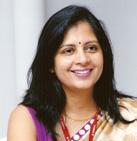
Dr. Monica Chaudhry , BSc, MSc Optometry, PhD Scholar, is the director of the Monica Chaudhry Vision Institute (MCVI) and the founder of Learn Beyond Vision, an online optometry upskilling education platform. Dr. Chaudhry is a retired
optometrist, having served at the All India Institute of Medical Sciences (AIIMS) in New Delhi. She had academic experience with various universities, including the Indira Gandhi National Open University (IGNOU) and Amity University (India), and has recently retired as director of School of Health Sciences at Ansal University (Gurgaon, India). In recognition of her contribution to the field of academic medical service, she has been awarded the Shreshtshree Award by the Delhi Citizen Forum, the Australian Leadership Fellowship award in 2012 and the IACLE Contact Lens Educator of the Year (Asia Pacific) award in 2015. Dr. Chaudhry was chairman of the Optometry Council of India. She has been actively involved in organizing conferences, seminars, national and international workshops, faculty development programs and many corporate training programs. monica.rchaudhry@gmail.com
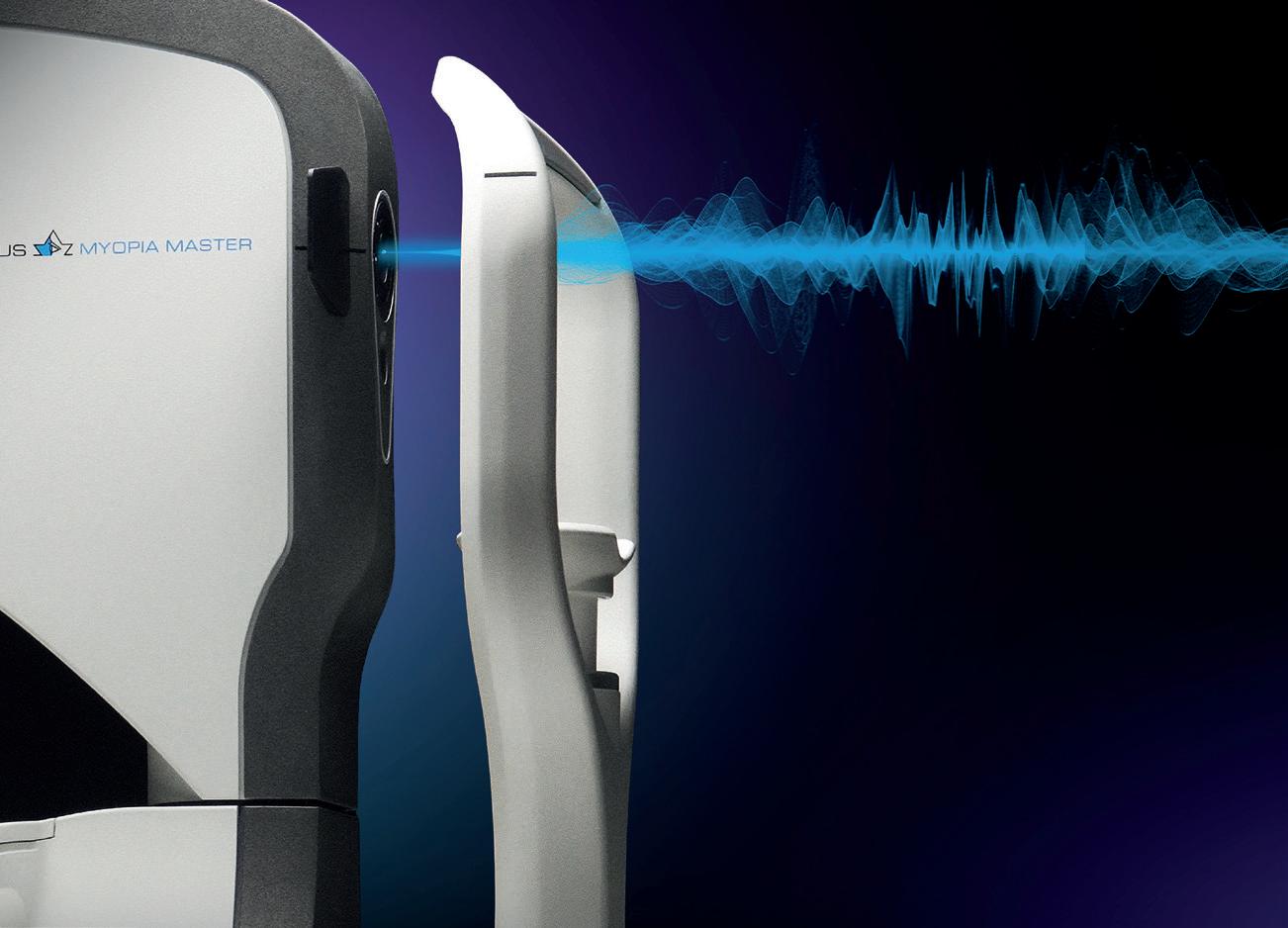
A true trailblazer, Dr. Daddi Fadel pushes boundaries and empowers women through her unique perspective and expertise in the specialty contact lens fieldby Chow Ee-Tan

Dr. Daddi Fadel's journey from Lebanon to Italy, and eventually Canada, epitomizes resilience and determination. Her pioneering work in optometry, particularly in specialty contact lenses, reflects her commitment to overcoming challenges and pushing boundaries. What’s more, Dr. Fadel’s advocacy for education and the empowerment of women highlights her multifaceted contributions to the world of eye care.
All her life, Dr. Daddi Fadel—a clinical scientist at the Center for Ocular Research and Education (CORE) and an adjunct assistant professor at the University of Waterloo, Ontario, Canada— has never been afraid to leave her comfort zone, fearlessly turning every challenge into motivation and aspiration.
Born in Lebanon, her family emigrated to Greece when Dr. Fadel was 14. After completing her high school education in France, she pursued further studies in optics in Italy, which became her home for the next three decades, profoundly shaping her career and personal life.
It was during this time that she established herself as a pioneer in contact lens designs and gained international recognition for
her expertise in various areas— particularly in contact lenses for irregular cornea, scleral lenses, myopia control, and orthokeratology.
“Looking back, my parents thought it would be beneficial for me to continue my studies in France after high school and have my older brother there to look out for me. However, this wasn't what I desired,” shared Dr. Fadel. “I wanted to affirm my independence, rely on my own strengths, and shape my path in life on my own terms.”
During her last year in school, she underwent an appendectomy performed by a Lebanese surgeon. “He shared stories about his brother who practiced optics in Italy, and how fulfilled he was in his career. Inspired by his words, I decided to go to Italy and study optics despite not
being familiar with optometry at that time. My parents finally relented but thought I would return home after a few months,” she recalled.
It turned out that the two years of studying optics were transformative for Dr. Fadel as she discovered the field of optometry. She decided to pursue it further, earning an Honor Degree from the Istituto Superiore di Scienze Optometriche in Rome.
While she already had an interest in contact lenses, she soon realized that she was seeking more substantial challenges beyond those presented by soft contact lenses. She developed a profound passion for specialty contact lenses, mainly corneal and ortho-k lenses, at that time.
“The uniqueness of each patient and their individual needs for customized care and lenses deeply resonated with me,” she shared. “Every day presented a new set of experiences to me, and witnessing the life-changing

impact that these specialty lenses had on patients further motivated me to embrace these challenges wholeheartedly.”
Once again, Dr. Fadel faced a dilemma: Should she let the lab handle the lens design within the constraints of known parameters and limited modification options, or should she take full control over every aspect of the lens parameters, including the risks involved in the fitting process? She opted for the latter.
“The uniqueness of each patient and their individual needs for customized care and lenses deeply resonated with me.”
“Despite the scarcity of technology at the time, I was fortunate to have access to a corneal topographer, which aided me in the lens design
process. However, the topographer scanning capabilities were limited to an 8 mm radius of the cornea, leaving my designs somewhat blind in the peripheral cornea.
“Nevertheless, through trials and errors with the initial lens designs and careful observation of the fluorescein patterns, I could identify areas needing adjustment and confidently make the necessary changes, armed with a comprehensive understanding of all the lens parameters,” she explained.
It was during her time in Italy that Dr. Fadel met her husband, with whom she built a family together, raising two boys now aged 18 and 16. While her practice had brought her great satisfaction, she said achieving recognition in Italy as a professional came with many challenges.
“Generally, being an optometrist in Italy was challenging, as it was not recognized as a healthcare profession. Additionally, I faced bullying and moral harassment from other eye care professionals. Nevertheless, these obstacles served as catalysts, igniting within me a fierce determination to persist, evolve, and enhance myself further,” she remarked.
Such challenges led Dr. Fadel to actively seek opportunities outside of Italy in recent years. The slow economic climate has also prompted many professionals to seek better opportunities abroad.
“Throughout my career, I've thought about providing my children with a brighter future and greater opportunities. Canada was an appealing option due to its reputation for being a safe country with

promising career prospects. CORE presented an ideal platform for me to expand my knowledge in research and contribute to cutting-edge research initiatives,” she noted.
Dr. Fadel is particularly enthusiastic about contributing to the development and expansion of research in specialty contact lenses within this facility. “It's a challenge I'm thoroughly enjoying,” she shared.
Contact lens technology has evolved to encompass a wide array of therapeutic applications, extending beyond mere vision enhancement to preventing or slowing the progression of myopia.
According to Dr. Fadel, the use of contact lenses for drug delivery, whether soft or scleral, has transitioned from theoretical to practical application. Scleral lenses, in particular, have also emerged as a versatile solution for promoting ocular surface healing across a spectrum of ocular diseases. Today, they are increasingly being prescribed even for mild cases of dry eye.
“I have always firmly believed in the potential of customized specialty lenses, seeing them as the future of optometry. And, now, that future has become a reality,’’ enthused Dr. Fadel. ‘’Nearly half of my patients, previously unaware of scleral lenses, opted to transition to this modality after experiencing its benefits. Thus, it is imperative for practitioners to actively assess the symptoms of dry eye and offer scleral lenses as a viable solution to prevent patients from discontinuing contact lens use,” she added.
Besides research, Dr. Fadel’s other passion lies in education. “I'm involved in a committee for PhD students, where I follow their academic journey and offer assistance. It is a rewarding experience which exposes me to new perspectives and ideas,” she shared.
Practitioners often encounter challenging cases that require creative solutions and innovative approaches, inspiring further research. “Indeed, research should be closely connected to the needs of patients and address real-world challenges,” she added.
“Therefore, researchers must ensure their work has a clinical impact. This involves staying in constant communication with practitioners who are on the frontlines to understand what is needed, provide effective solutions, and develop new products for patients.”
Writing also holds a significant place in Dr. Fadel’s professional endeavors. She’s an author and co-author of several papers, with her primary objective being to share her knowledge with other eye care professionals, specifically focusing on specialty lenses.
“The challenges faced by a female optometrist remain formidable. Women continue to bear a disproportionate burden, requiring double the effort to attain half the recognition compared to men. Women should not be subjected to the risk of burnout solely because of their gender. Much work still needs to be done, and GLOW aims to address these issues.”
“I feel a sense of duty to disseminate knowledge to my peers worldwide, as I firmly believe in the ripple effect of education. By empowering practitioners with the necessary knowledge and skills, I am indirectly contributing to the well-being of countless patients across the globe,’’ she enthused.
One of the most rewarding aspects of her work is when her publications are
read by eye care professionals around the world. This validation holds profound significance for Dr. Fadel as it indicates that her aspirations are being translated into tangible impact, positively influencing her peers and practitioners despite not having any previous affiliation with an academic institution.
gaining diverse insights that enrich my understanding and provide a broader range of perspectives into my work,” she concluded.

In addition to her numerous contributions to the field of optometry, Dr. Fadel established the European School of Scleral Lenses (EUROSCOLE) and Global Ophthalmic Women (GLOW).
“EUROSCOLE translates my educational vision into reality, while GLOW empowers women to support each other, fostering robust female leadership through adequate education and support,” she explained.
“The challenges faced by a female optometrist remain formidable. Women continue to bear a disproportionate burden, requiring double the effort to attain half the recognition compared to men. Women should not be subjected to the risk of burnout solely because of their gender. Much work still needs to be done, and GLOW aims to address these issues,” she shared.
A woman of many talents and aptitudes, Dr. Fadel is a polyglot who speaks five languages: Arabic, English, French, Greek, and Italian. She is also currently learning Spanish.
“I am incredibly fortunate to speak multiple languages, a skill cultivated through my education and experiences in various countries,” she noted. “Learning a language not only enables communication but also offers insight into the associated culture. It allows me to better empathize with people from various countries, whether they're eye care professionals or patients.
“Additionally, it enables me to read publications from different countries,
Dr. Daddi Fadel , DOptom, FSLS, FBCLA, FAAO, FIACLE, an accomplished clinical scientist at the Center for Ocular Research and Education (CORE) and adjunct assistant professor at the University of Waterloo in Ontario, Canada, is renowned for her expertise in modern lens designs and specialty contact lenses. Graduating with honors from the Istituto Superiore di Scienze Optometriche (ISSO) in Rome, she embarked on a prolific career marked by early contributions to lecturing and publishing. With over 26 years of experience, she is an internationally recognized key opinion leader, delivering lectures in five languages at national and international symposia and co-authoring notable works. Dr. Fadel's leadership extends to her role as Editor-inChief of the Journal of Contact Lens Research & Science (JCLRS). She is a certified advanced speaker to conduct NCLE-approved courses, as well as the first Certified EyePrint Practitioner outside the USA and Canada. Dr. Fadel is a Fellow of prestigious organizations, including the Scleral Lens Education Society (SLS), the British Contact Lens Association (BCLA), the American Academy of Optometry (AAO), and the International Association of Contact Lens Educators (IACLE). Furthermore, she has founded initiatives such as the European School of Scleral Lenses (EUROSCOLE), Global Ophthalmic Women (GLOW), and The Summit of Specialty Contacts (SSC), demonstrating her commitment to advancing the field and supporting professionals globally. She also holds positions on various councils, advisory boards, and committees, promoting excellence and innovation in optometry and specialty contact lenses on a global scale.
daddi.fadel@uwaterloo.ca
Amid a shift towards personalized experiences, is the eyewear industry ready for 3D printing?
by Tan Sher Lynn3D printing in eyewear is opening up new design opportunities in eye care, enabling the reproduction of intricate frame structures and quick prototyping. Despite challenges in material restrictions and costs, ongoing innovations point to a hopeful future with sustainable growth for 3D-printed eyewear.

The advent of 3D printing technology to the eyewear sector is bringing massive changes to the industry. In the modern marketplace of lower-cost, bespoke products, the era of onesize-fits-all eyewear is gradually fading away—making room for the kind of personalized, customized experiences that are the hallmarks of 3D printing.
We interviewed Mr. Sean Yang, CEO of Eyefiy, a leading traditional eyewear manufacturer from China, to gain insights into the profound impact of 3D printing technology on the current eyewear market, including its advantages, challenges, market dynamics and future prospects.
Redefining eyewear production
According to Mr. Yang, one of the standout advantages of 3D printing in eyewear is its ability to achieve intricate and complex designs once deemed impractical or impossible with conventional manufacturing methods.
From avant-garde frame structures to intricately detailed temple designs, 3D printing empowers designers to unleash their creativity without the constraints of conventional manufacturing processes. This agility allows for iterative improvements and faster time-to-market for new eyewear designs.
“3D printing technology allows us to rapidly validate our design concepts during the eyewear development phase. It can achieve complex structures that are challenging to accomplish with traditional eyewear manufacturing,” shared Mr. Yang.
“Additionally, 3D printing does not have a minimum order quantity, unlike traditional eyewear, which typically requires a certain minimum order due to bulk material procurement,” he added.
The 3D printing conundrum
However, implementing 3D printing in the eyewear industry comes with its
set of challenges. Mr. Yang mentioned that currently, the two main limitations of 3D printing technology are materials and costs.
“While new 3D printing materials emerge from time to time, it's difficult for them to match the quality of traditional eyewear materials like metals or acetates. Producing highquality eyewear requires printers that could cost several thousands or even tens of thousands of dollars, with industrial-grade machines costing even more,” he said.
Due to material limitations, many 3D-printed eyewear products may experience frame oxidation if exposed to sunlight for extended periods. “Since 3D-printed eyewear is relatively new and not widely distributed, there may be many aging issues yet to surface,” Mr. Yang said.
The market for 3D-printed eyewear is experiencing growth, especially in regions such as North America and Europe, with promising potential for further expansion in Asia. Despite this positive trend, 3D-printed eyewear currently maintains a relatively modest market share when compared to traditional eyewear.
“3D printing is a hot topic in the eyewear industry, with many people discussing it. At major trade shows, there are specialized booths displaying 3D-printed eyewear. However, despite the buzz, the market share of 3D-printed eyewear remains modest. We foresee gradual growth in market share, but we do not anticipate it to disrupt traditional eyewear, at least not in the short term,” shared Mr. Yang.
“For the time being, 3D printing technology is probably more advantageous for individual 3D enthusiasts, who can substantially participate in eyewear development, leveraging their creativity to craft unique designs.”
So what is the future trajectory of 3D printing technology in eye care?
“In my view, 3D printing technology is still in the exploratory stage.
It has improved our design and development efficiency to some extent. As 3D printing continues to evolve rapidly, I believe it will have a place in the eyewear industry in the near future,” said Mr. Yang.
“Currently, its market share is on a steady rise and is expected to continue until it stabilizes at a certain level relative to traditional eyewear," he elaborated.
Sustainability is another key area where 3D-printed spectacles have generated a great deal of buzz. While some have touted 3D printing materials as environmentally beneficial due to potential recyclability and reduced waste in production, the overall environmental impact compared to traditional manufacturing methods remains debatable.
Mr. Yang did not perceive a notable contrast in environmental repercussions between 3D printing and conventional eyewear manufacturing. “Personally, I do not see a significant difference in environmental impact between 3D printing and traditional eyewear manufacturing, although some 3D printing materials are marketed as being degradable and environmentally beneficial,” he said.
technology developers, and regulatory bodies will be instrumental in cultivating innovation while upholding quality standards.
“The future of 3D-printed eyewear may also be shaped by strategic collaborations and partnerships between eyewear manufacturers, 3D printing companies, and material suppliers. These partnerships can help drive innovation, improve production processes, and broaden the range of available materials, ultimately enhancing the overall customer experience,” he added.
Ultimately, a balanced approach that embraces technological advancements while addressing material limitations and regulatory considerations will drive the sustainable growth and adoption of 3D printing in the eyewear sector. While challenges persist, ongoing advancements in materials and technology signal a future where 3D-printed eyewear could attain market prominence alongside traditional ones.

The integration of 3D printing technology in the eyewear industry presents both opportunities and challenges that must be carefully navigated. To maximize its potential effectively, stakeholders should prioritize several key actions.
According to Mr. Yang, industry standards and regulations specific to 3D-printed eyewear need to be established to ensure product safety, performance, and consumer trust, Mr. Yang noted. “Setting clear expectations and guidelines for the production of 3D printed eyewear will help protect both consumers and manufacturers,” he said.
In addition, collaborative initiatives between eyewear companies,
Contributor
Mr. Sean Yang is the CEO of Eyefiy, a seasoned eyewear manufacturer specializing in original equipment manufacturer (OEM) production for eyewear brands. With a deep-rooted passion for eyewear craftsmanship and innovation, his expertise spans the entire spectrum of eyewear manufacturing—from initial design concepts to mass production, with years of experience crafting for globally renowned brands. Mr. Yang believes in the artisanal nature of eyewear production, where attention to detail is paramount. Through his LinkedIn page and industry engagements, Mr. Yang strives to share valuable insights and foster dialogue within the dynamic landscape of the eyewear industry.
sean@eyefiy.com



With sports being a lucrative industry, why not set up your own sports vision clinic?
by Andrew SweeneySport is a huge part of our culture and a significant field within the medical industry. Without well-maintained and properly treated eyesight, the majority of athletes cannot excel—which presents a great opportunity for optometrists to establish specialized sports vision clinics. We interviewed two experts in the field to find out more.

Sport dominates huge swathes of the cultural landscape in the United States and many other countries, serving not only as media entertainment but also as a fundamental aspect of our national identities and daily lives. According to research published by Harvard University, one in four adults in the US plays sports on a regular basis.1 That’s equivalent to 83 million people participating in soccer, baseball, hockey, tennis, and various other disciplines.

It is a big part of our cultural identity and even bigger business, with the American sports industry alone estimated to be worth over $83 billion in 2023, with substantial further growth anticipated in the next five years.2 It’s a lucrative market for companies to capitalize on. So why shouldn’t optometrists carve out their own niche by setting up specialist clinics focused on sports vision?
The vast majority of sports activities rely heavily on eyesight, and individuals with perfect or nearperfect vision have an undeniable advantage over their competitors. Yet sports vision remains a relatively small specialty in optometry.
Given the unique demands of their activities, sportspeople require specialized treatment more than what the average person needs. This makes sports vision an essential discipline in optometry.
In one comprehensive study, researchers distributed a questionnaire to 1,573 individuals who regularly engaged in sports activities to inquire about their eyesight. Nearly all respondents (93.8%) reported having their vision checked at least once recently, with 53 subjects (3.4%) having undergone refractive surgery. Among those who had not undergone refractive surgery, 580 (38.2%) reported vision defects, 474 (31.2%) were myopic, 63 (4.1%) were hyperopic, and 241 (15.9%) were astigmatic.3
This study found no significant association between sports and different levels of myopia prevalence in the adult population. The only observable difference was between people who played indoor and outdoor sports. Hence, it suggests that being predisposed to sports doesn’t necessarily mean having better eyesight than the average person.3 Dr. Keith Smithson, cofounder of Sports Vision Pros (Leesburg, Virginia), can attest to this.
Dr. Smithson, who also serves as the team optometrist for the Washington Nationals baseball team, played soccer throughout his university years. His interest in sports drove him towards the medical field, where he merged his passion for soccer and medicine. He believes that sports vision should be a priority for optometrists—regardless of whether they operate a specialized practice or not.
“Every doctor or optometrist should be knowledgeable enough to understand the sports components of vision testing and effectively address the needs of athletes. At Sport Vision Pros, we do everything we can to educate doctors and clinicians about what they can do for athletes within their everyday exam room. This doesn't necessarily require additional
equipment or resources.”
Dr. Kevin Smithson
“Every doctor or optometrist should be knowledgeable enough to understand the sports components of vision testing and effectively address the needs of athletes. At Sport Vision Pros, we do everything we can to educate doctors and clinicians about what they can do for athletes within their everyday exam room. This doesn't necessarily require additional equipment or resources,” remarked Dr. Smithson.
While sports vision remains a fairly niche discipline in optometry, Dr.
Smithson pointed out that there’s been a significant uptick in sportsfocused technological development. He cited eye-tracking technologies like RightEye (Bethesda, Maryland, USA), which he described as a “great little technology that helps me get additional data points for athletes.” He also uses a virtual reality training program at his clinic called SharpEye Shootout (Deadeye Gaming, Inc.; Delaware, USA), a game that is designed to improve visual acuity and decision-making speed.
Dr. Jennifer Stewart, founder of Look New Canaan (New Canaan, Connecticut, USA), echoes Dr. Smithson’s sentiment. She suggests that optometrists looking to reorient their clinics towards sports visions don’t necessarily need to immediately adopt new tools and technology. The first step they can take is to change their mindset about their patients.
“We typically don’t use the word ‘patient' when talking about our sports vision clients, we refer to them as athletes. These athletes come to us to enhance their sports performance, not to solve an issue with ocular health,” Dr. Stewart said.
“What makes this practice different? Typically, it is conducted in a larger, open space and not in an exam lane. The technology and tools are different, and the training is not a typical eye exam. These individuals are often high-performing athletes, as opposed to patients coming to us to address an issue. Therefore, it is necessary to adopt a different
“We typically don’t use the word ‘patient' when talking about our sports vision clients, we refer to them as athletes. These athletes come to us to enhance their sports performance, not to solve an issue with ocular health.”
Dr. Jennifer Stewart
mindset for each group,” explained Dr. Stewart.
“My best advice to optometrists is to prioritize location first: Where will you be training these athletes? What type of equipment will you need? How much space do you have? Who will be doing the training? Most athletes are available during the afternoons, evenings, and weekends—how will you staff that?”
Dr. Jennifer Stewart
When Dr. Stewart started as a sports vision specialist, she felt that there wasn’t a great deal of support for people like her who wanted to specialize in this area. That’s what motivated her to launch her own course, Sports Vision Training: See Faster, Play Faster,4 an educational blueprint for optometrists wanting to specialize in this field.
The challenges she faced have also given her valuable perspectives for optometrists looking to specialize in sports vision as well.
“My best advice to optometrists is to prioritize location first: Where will you be training these athletes? What type of equipment will you need? How much space do you have? Who will be doing the training? Most athletes
are available during the afternoons, evenings, and weekends—how will you staff that?” Dr. Stewart added.
She further explained that there is a lot of groundwork to be put into place to be successful in this field. “You should make a wish list of everything you want, and then go through that and see what you need, what you can afford, and what you have space for. You can get very creative with inexpensive tools, you are only limited by your creativity and vision,” she said.

“I want the eight-year-old tennis player who comes into my clinic to be successful, so that they continue to play and learn life lessons. That way, later in life when they need some determination, they can fall back on the skills that they learned from playing tennis for many years as a youth,” he concluded.

Dr. Smithson also offers educational courses, available on the Sports Vision Pro website,5 designed to help optometrists enter the sports vision field. These lessons include free 10 hours of educational courses accessible to clinicians across the globe.
He emphasized the importance of viewing oneself and the patient as a team in both optometry, in general, and sports vision, in particular. He added that a collaborative approach to maintaining ocular healthcare is crucial to ensuring the best outcomes for athletes and patients alike, regardless of their health concerns.
“Becoming a sports visionfocused optometrist is all about making slight adjustments in how you typically approach a patient. We're all a part of a team, and we all work together to maximize the skills of our athletes,” Dr. Smithson said.
Dr. Kevin Smithson , OD, is a partner with the Northern Virginia Doctors of Optometry and the past chair of the American Optometric Association's Sports and Performance Vision Committee. A founding partner of Sports Vision Pros, Dr. Smithson is also the director of Visual Performance for the Washington Nationals baseball team and the Washington Commanders football team. In addition to these roles, he is the team optometrist for the Washington Mystics women’s basketball team, Spirit and DC United (both soccer teams), and a visual performance consultant for the Washington Capitals ice hockey team.
ksmithson@sportsvisionpros.com

1.Poll: Three in Four Adults Played Sports When They Were Younger, But Only One in Four Still Play. Harvard T.H. Chan School of Public Health. Available at https://www.hsph.harvard.edu/news/pressreleases/poll-many-adults-played-sports-when-young-but-few-still-play/. Accessed on March 22, 2024.
2.North American Sports Market Size From 2009-2023. Statistica. Available at https://www.statista. com/statistics/214960/revenue-of-the-north-american-sports-market/. Accessed on March 22, 2024.
3.Zeri F, Pitzalis S, Di Vizio A et al. Refractive Error and Vision Correction in a General Sports-Playing Population. Clin Exp Optom. 2018;101(2):225-236.
4.Learn. Learn online from OD perspectives and Dr. Jennifer Stewart. OD Perspectives. Available at https://learn.odperspectives.com/pages/courses. Accessed on March 22, 2024.
5.Basic Training. Sports Vision Pros. Available at https://www.sportsvisionpros.com/svp/category/ Basic%20Training. Accessed on March 22, 2024.
Dr. Jennifer Stewart , OD, is an optometrist, internationally recognized speaker, writer, consultant, and entrepreneur. She is the founder and chief vision officer of Look New Canaan, a boutique private practice in New Canaan, CT, USA. She helps optometrists and organizations with operations, sales success, practice management and sales team training through her advisory and consulting firm, OD Perspectives. Dr. Stewart is the co-founder and chief vision officer for Performance 20/20, which provides services for sports and performance vision training. She serves on the Executive Board of the International Sports Vision Association and provides consulting for sports vision practitioners around the world. jen.stewart@perform2020.com
